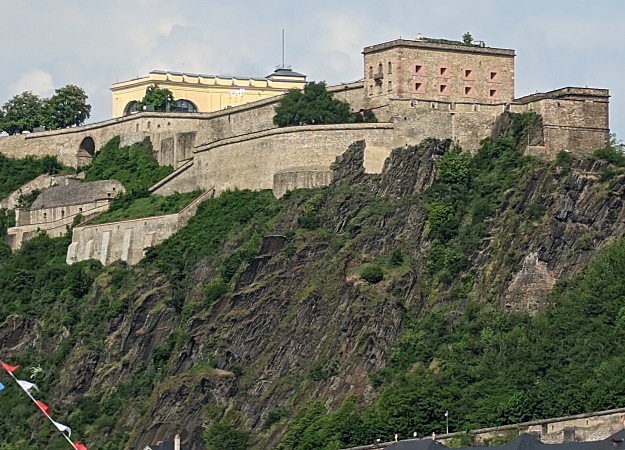It has this designation because of its beauty as a cultural landscape, its importance as a route of transport across Europe, and the unique adaptations of the buildings and terraces to the steep slopes of the gorge.
If you want to see castles you have come to the right place.
But we will start with a church, one of the other common sights along the river
This is the Chapel of St. Roch in Bingen built in 1666
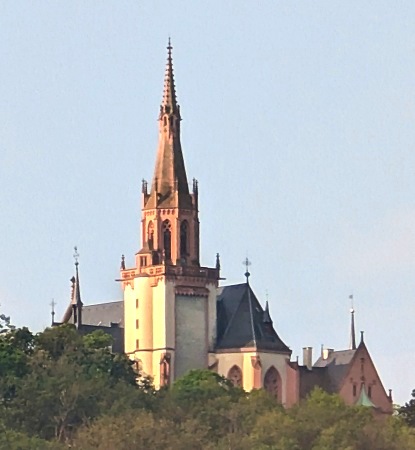
Adlerturm or Eagle Tower was once part of the fortifications of Rüdesheim.
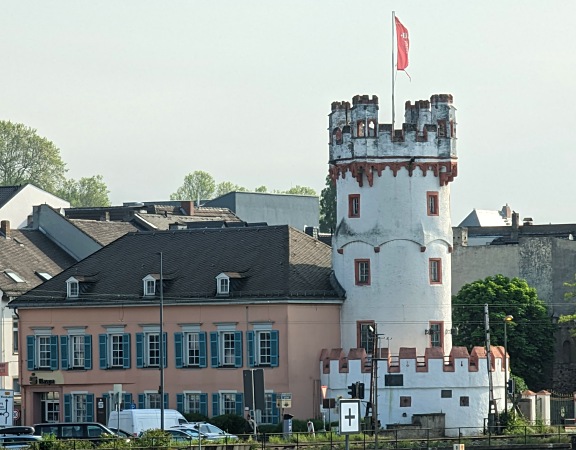
Bromserburg: Castle with vineyards beyond.

Villa Sturm, built in 1891 since 1996 it is a B&B.
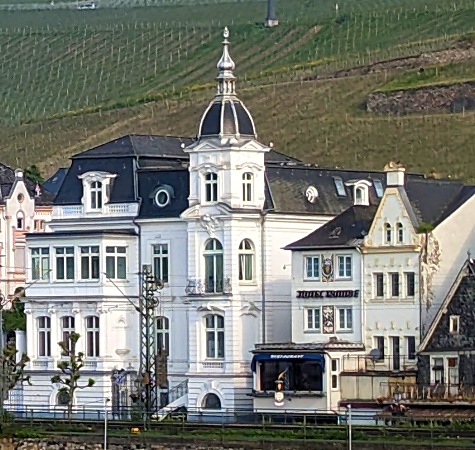
Ehrenfels Castle was built in 1212 or before.
There is a grape variety named after it.

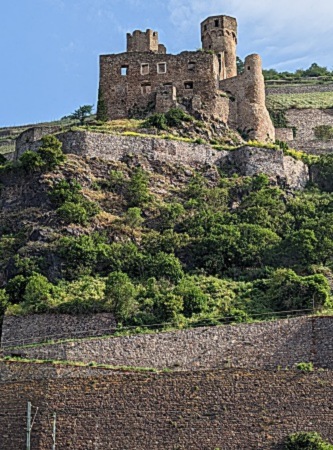
Romans built the original structure on this site.
It later fell and was rebuilt many times.
It was restored in 968 and in 1298 it became an official customs collection tower.
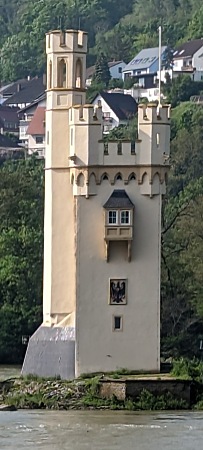
Rheinstein Castle built in 1316.
Its garden has a Burgundy grape vine that is about 500 years old and still produces grapes
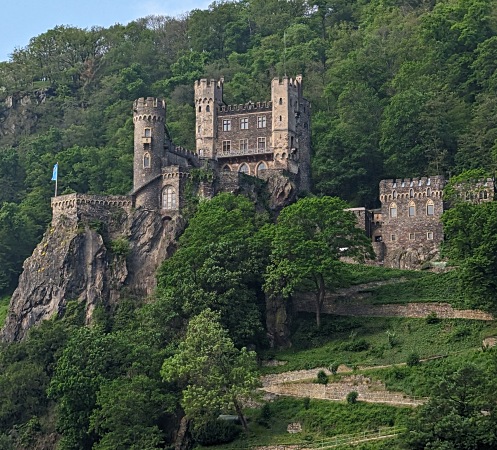
Reichenstein Castle, also known as Falkenburg, was a notorious nest of robber barons in the 13th century.
Now it is a hotel and hosts tours.
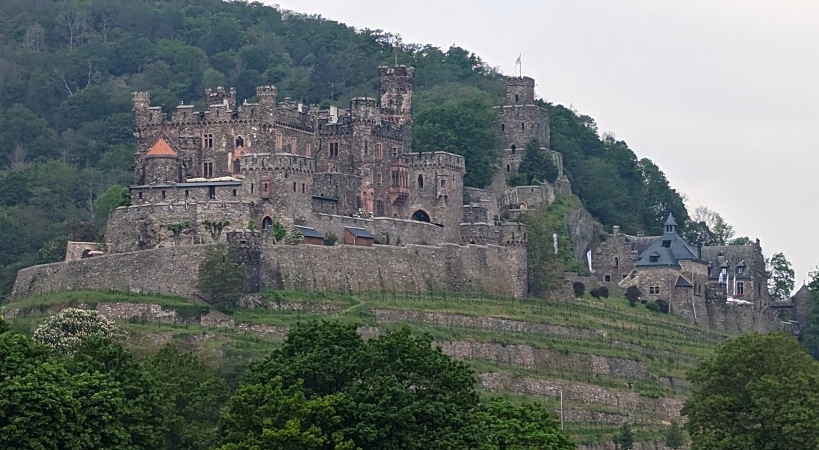
Sooneck Castle, also known as Saneck or Sonneck dates from 1271 or before.
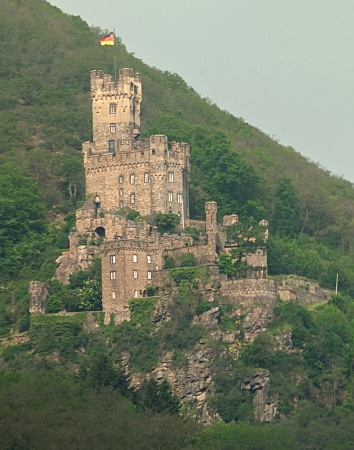
Heimburg above Niederheimbach was originally built in 1295 but totally destroyed in the early 1600's.
In 1866-68 it was restored and extended in the following years.
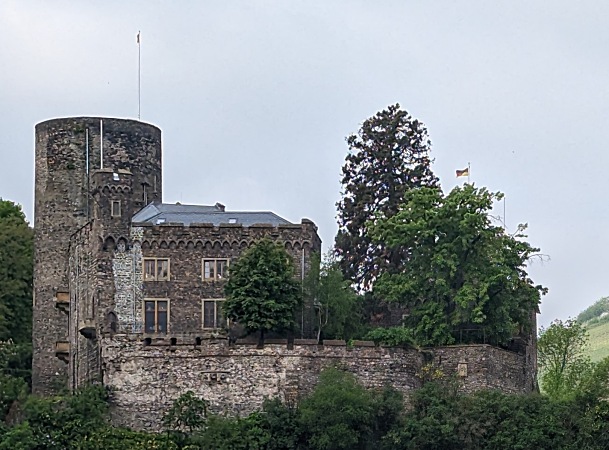
Just below the castle is the Catholic Parish Church of the Assumption of Virgin Mary and Heimburg.
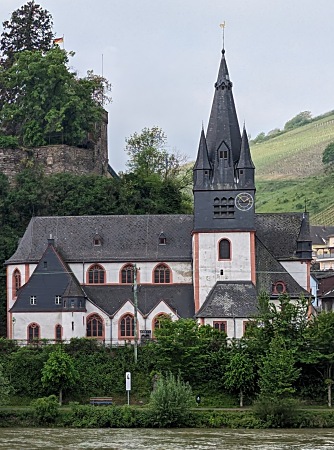
In Lorch am Rhein we find St. Martin, a Gothic church built starting in 1270.
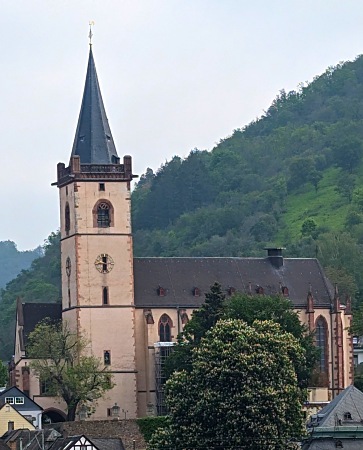
The ruins of the Fürstenberg Castle which was built, in 1219
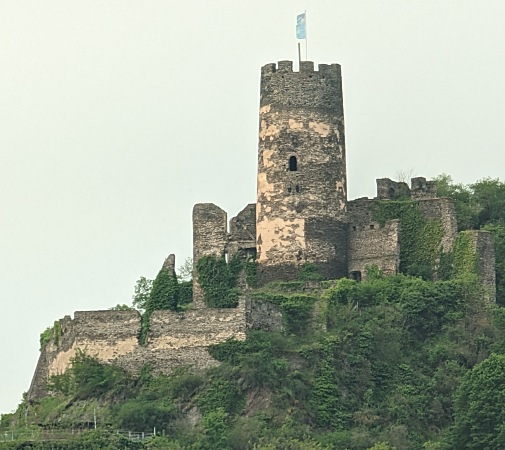
St. Bonifatius in Lorchhausen was completed in 1879.
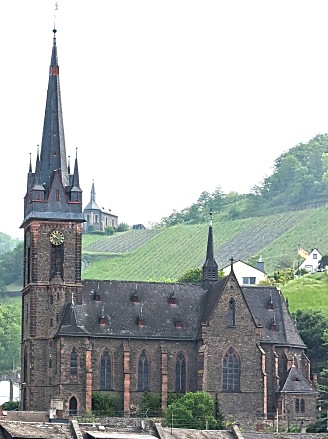
Stahleck Castle, its date of construction is uncertain, possibly around 1135.
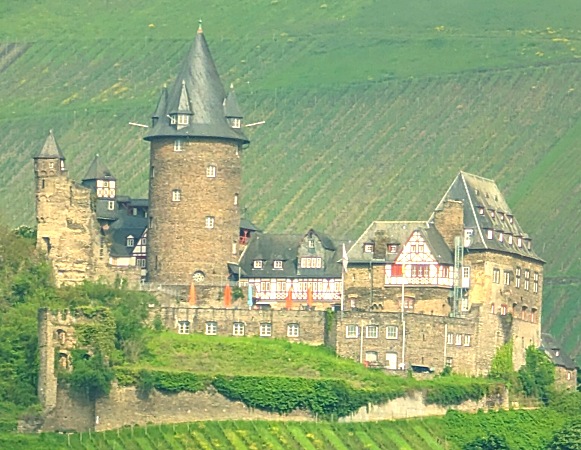
Burghotel Auf Schönburg at Oberwesel was mentioned as early as the year 911.
It is now a hotel.
The second picture was taken from quite a distance, sunlight, and mist in the air made it look ghostly.
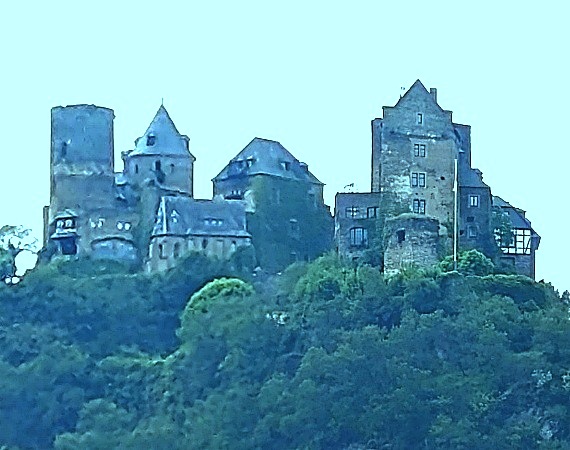
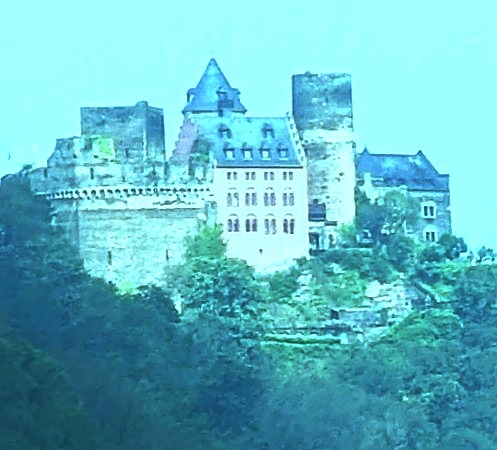
Gutenfels Castle was built in 1220. It was used together with the much better maintained toll castle, Pfalzgrafenstein in the middle of the Rhine
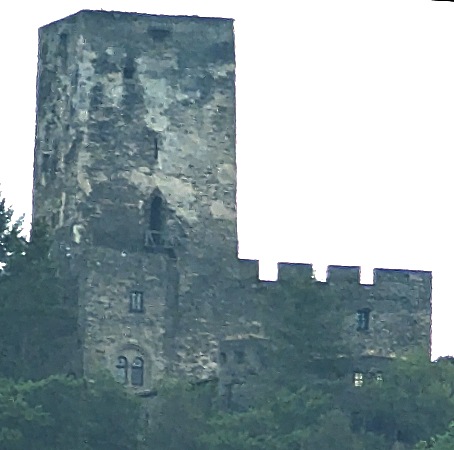

Liebfrauenkirche The start of construction is dated to 1308
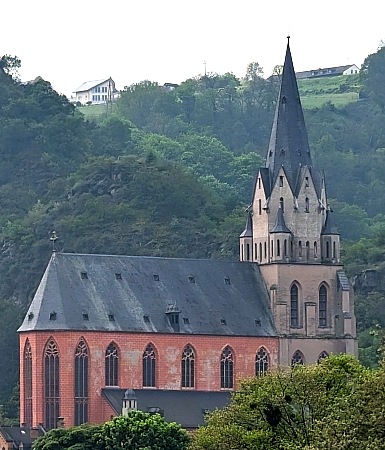
Train tunnels, one made to resemble a building.
We were told that it was possibly to confuse bombers during WW II.
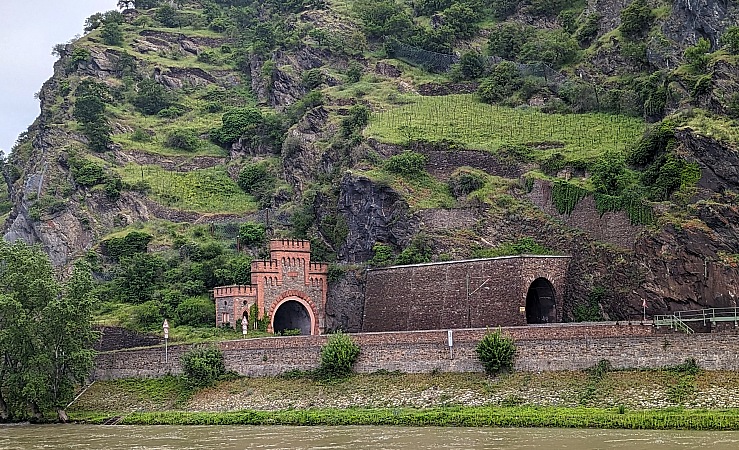
St. Martin is a church in Oberwesel.
The tower was once part of the town's defenses.
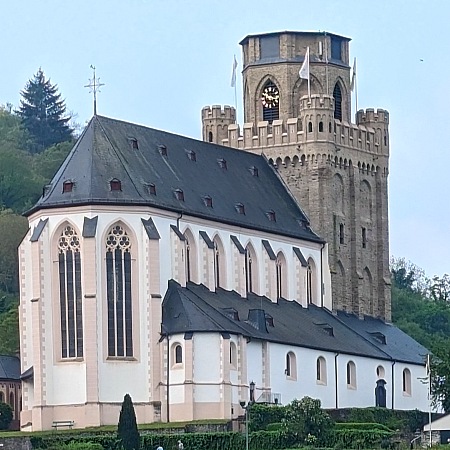
The Ochsenturm in Oberwesel is part of the remaining medieval town's fortifications.
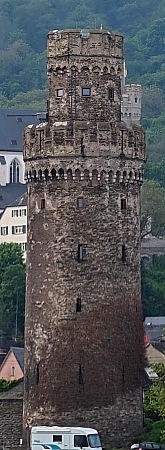
Another train tunnel. This one disguised as a church.
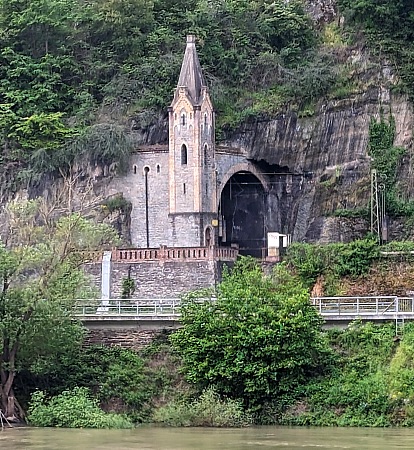
The Lorelei rock means 'murmuring rock' referring to the echoes surrounding the rock.
Somehow in Germanic mythology the echoes became Lorelei who lured seafarers to the rocks with beautiful singing.
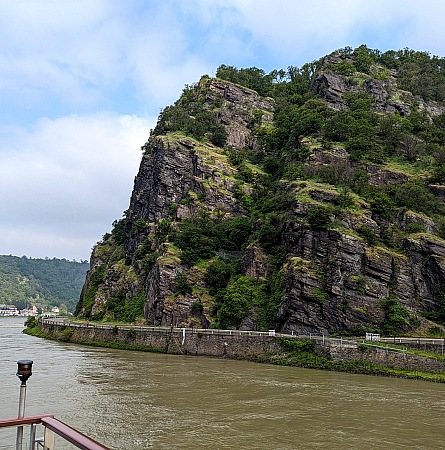
She is often depicted as a nymph on a rock, combing her golden hair and drawing ships to the rocks.
And here she is!
Katz Castle is above the German town of Sankt Goarshausen.
It was built around 1371 by Count William II of Katzenelnbogen.
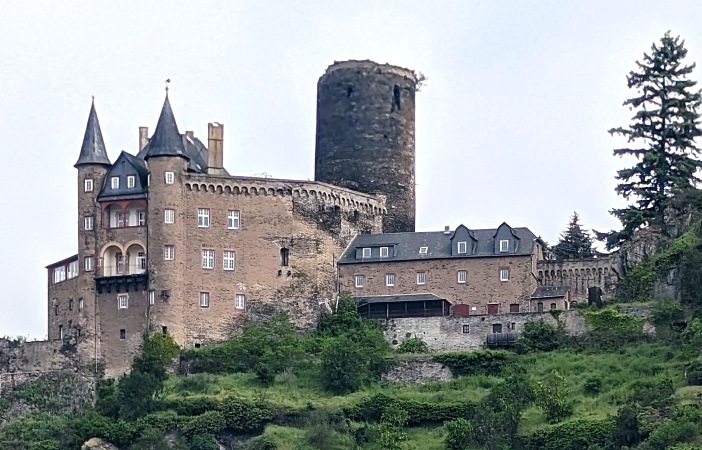
The residential tower of Castle Eltville from the 14th century
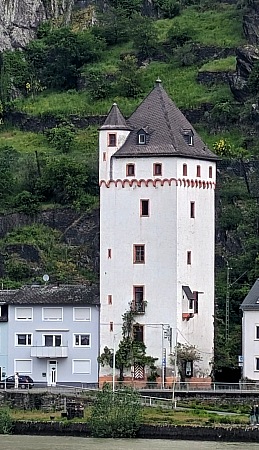
In the hazy distance we got a castle twofer.
Sterrenberg Castle on the right and Liebenstein Castle on the left.
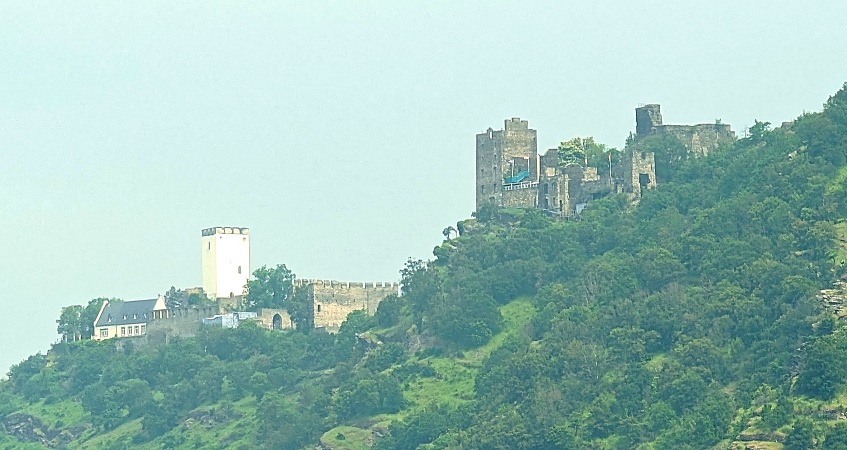
A long way off, high on the rocks over the river we spotted some goats.
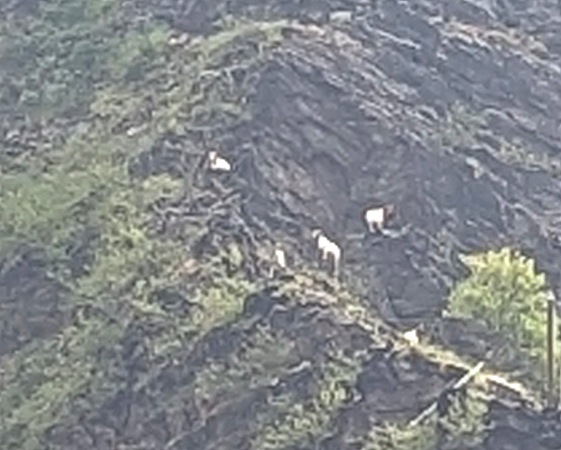
The Marksburg is a castle above the town of Braubach.
We toured it later that day.
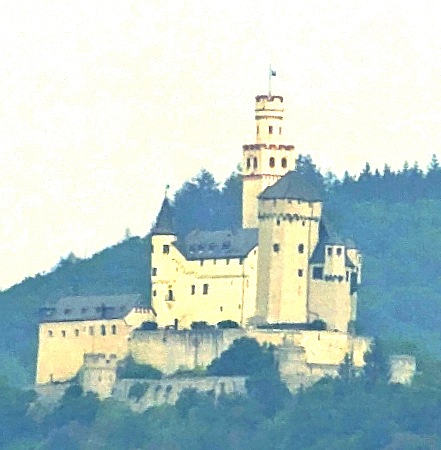
On the river was a structure that served as a watchtower, customs tower and probably a witches tower at various times
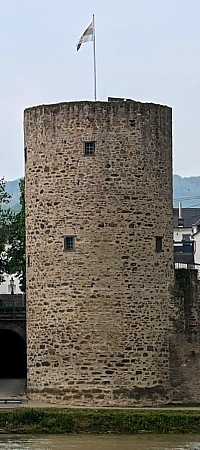
And yet another.
This one is the Stolzenfels Castle just up the river from Koblenz
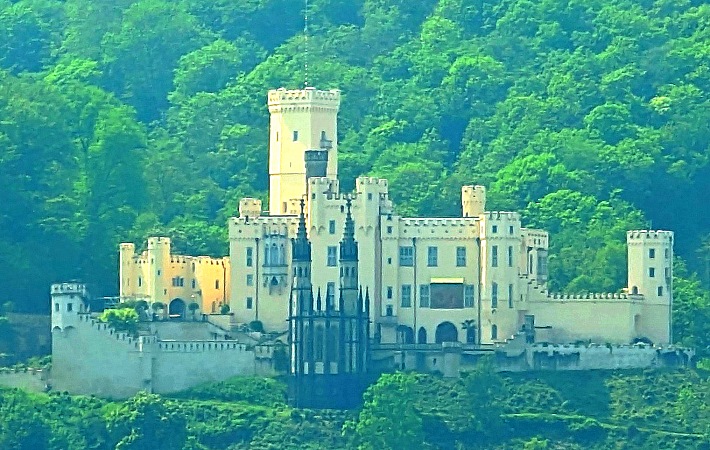
We left our Boat at Koblenz and after a half hour bus ride and a short walk we were at the Marksburg Castle.
You would need to be highly motivated to storm this wall especially after climbing the steep hill the castle sits atop.
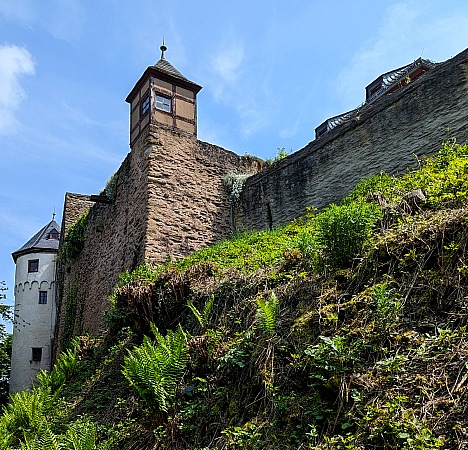
The castle is about 600 ft (180m) above the river..
Here you can get some idea of how high we are from the river and town.
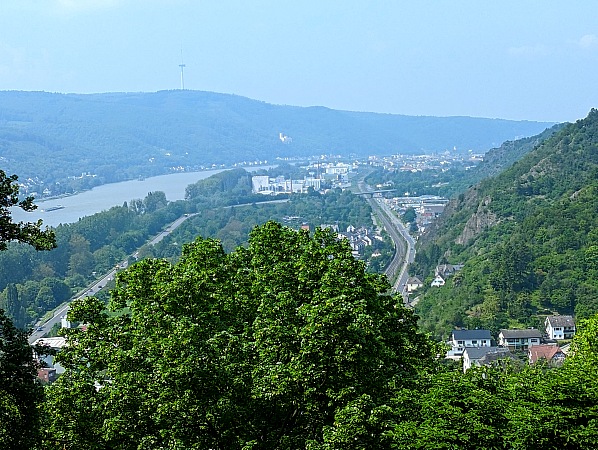
To enter you must pass through four gates.
This is the second called the Fox gate.
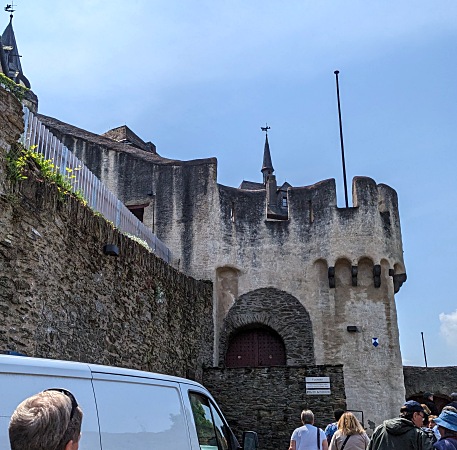
A few more steps and we will be inside.
If we manage to pass the third, the Arrow Slit Gate.
If we aren't wanted we may have to deal with whatever may be dumped from above.
At some time in it's history the entrance was reduced to limit the number of people that could attack and enter.
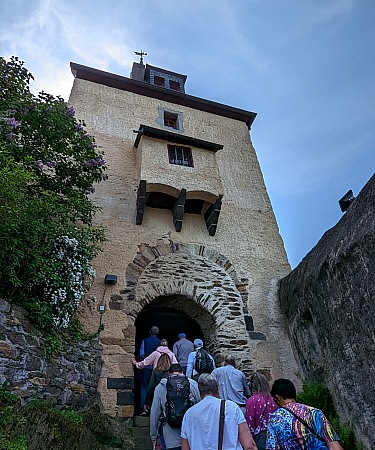
Inside the final gate we meet the keeper of the key and our guide for the tour.
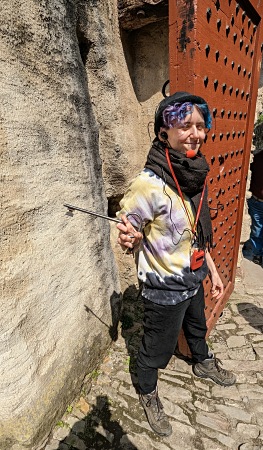
Once inside the portal was closed and locked behind us.
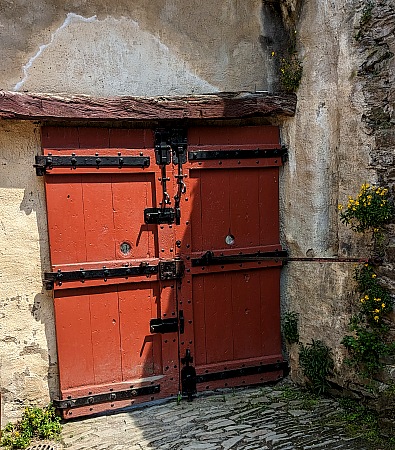
Coats of arms of the families who owned the castle over its history
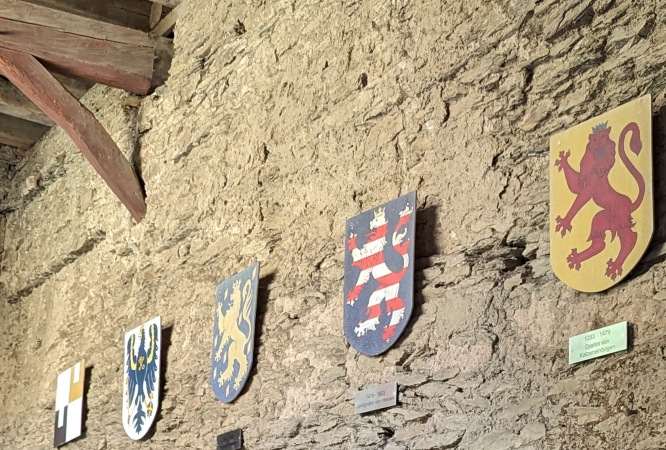
It is the only hilltop castle on the Middle Rhine that escaped destruction.
It was never captured or fell to ruin.
Its location and in later years these armaments were each effective in its defense.

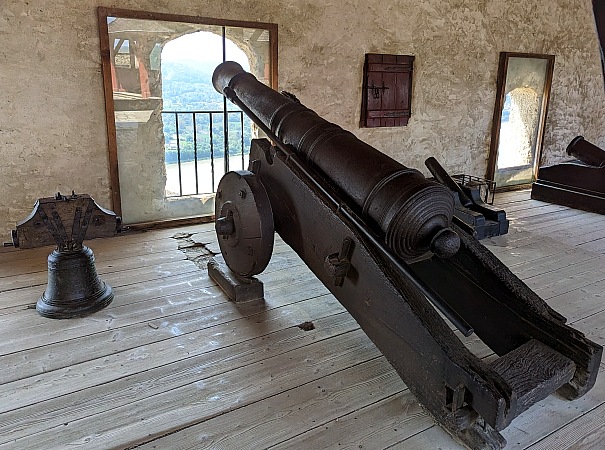
The device/structure in the foreground looks like a windlass and probably had a hole in the floor for raising cannonballs and powder to the level below.
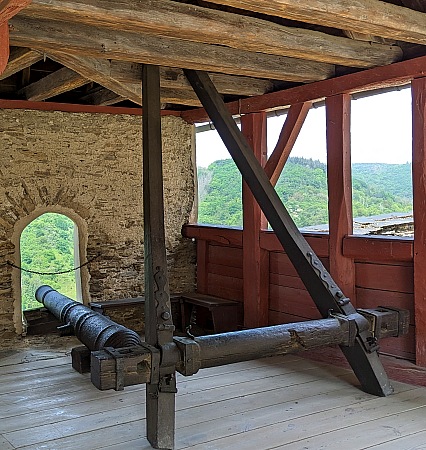
A flower garden along the base of a wall inside the castle.
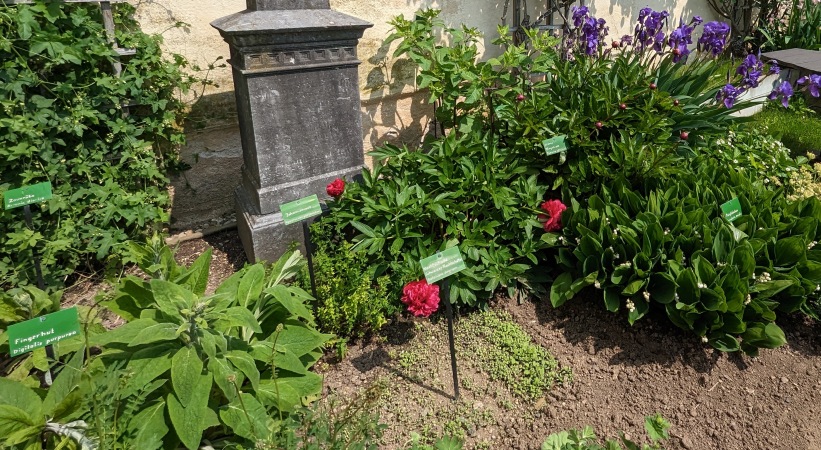
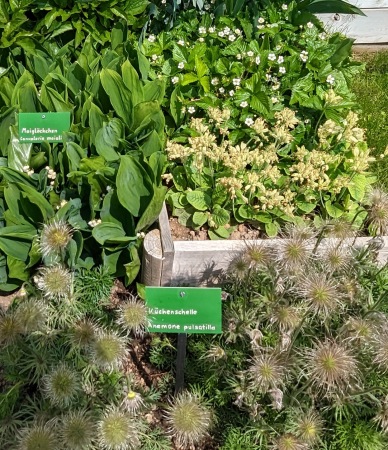

There was a mason bee nesting box in the garden to encourage pollination..
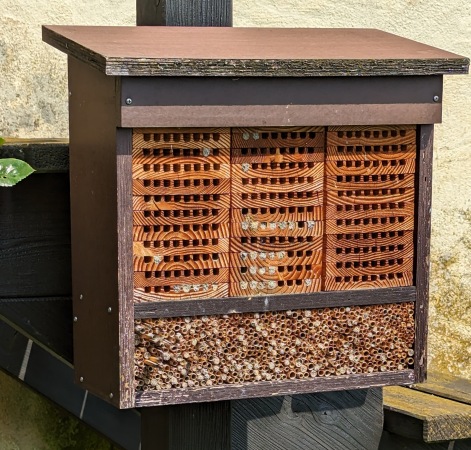
And nearby a kitchen garden of herbs
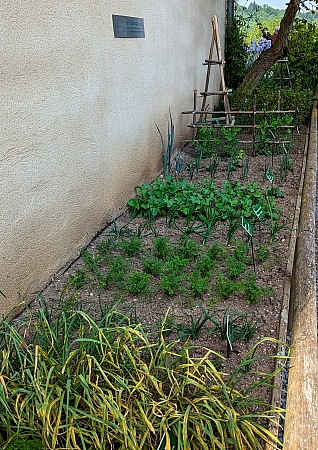
Back inside we visited the wine production and storage rooms.
On display were baskets for collecting the grapes, a machine to mash the grapes and several presses to extract the juice.
In the center is a jaw horse for clamping a piece of wood while it is shaved into a barrel stave..
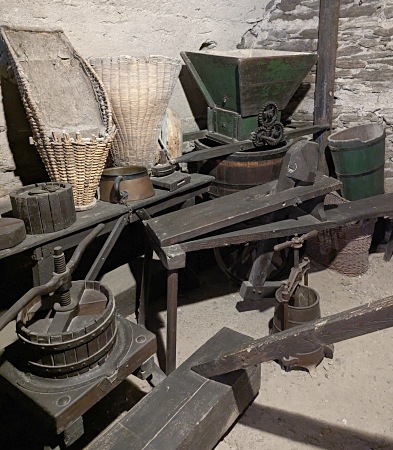
Wine was stored in these barrels.
The bellows was used to pressurize the barrel to transfer the wine to another barrel or one of the pitcher/tankards.
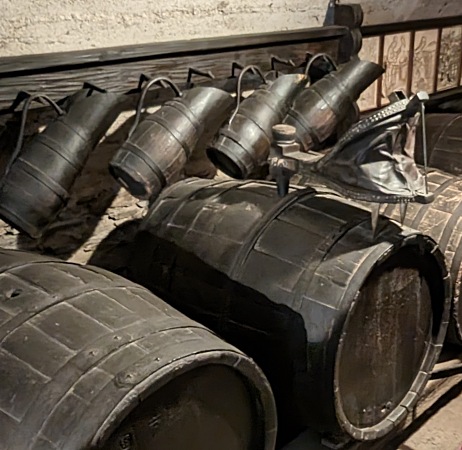
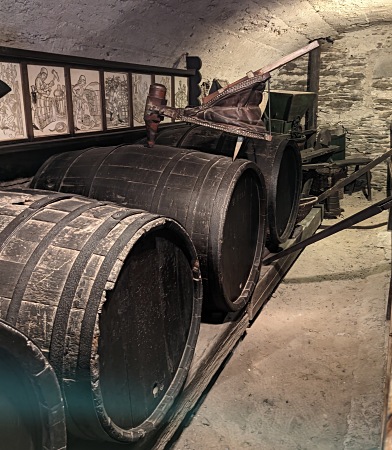
This large press seemed out of place since it was much larger than any of the other wine making equipment.
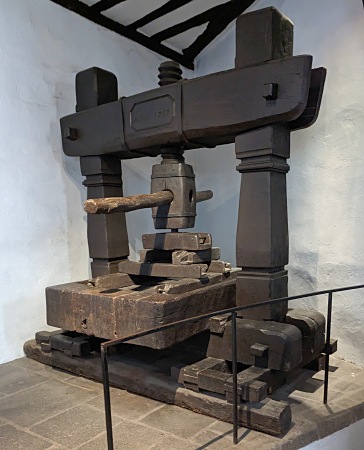
A huge fireplace in the kitchen would be used to prepare several courses for a banquet or just to prepare a simple meal of gruel or porridge.
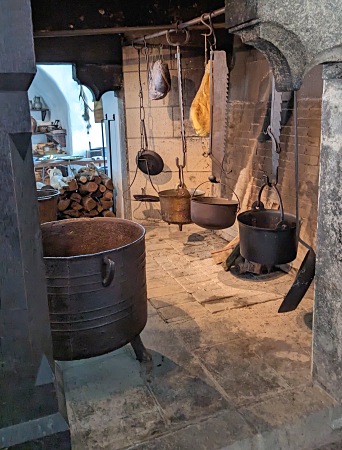
The food preparation area with dried herbs above and assorted tools
Easily identified are ladle strainers, churns, a wooden grater, buckets and bowls.
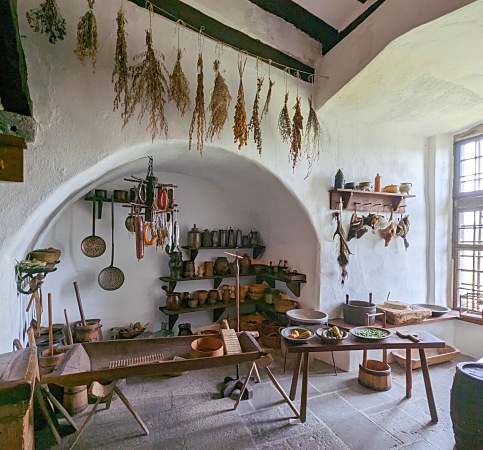
A bed and cradle were on display.
The drapes were not for modesty but to conserve heat, since castles weren't exactly energy efficient.
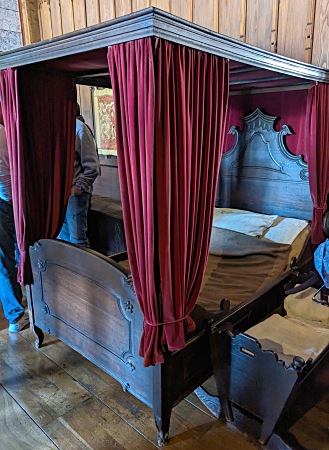
Windows made of glass disks called crown glass formed using the same techniques as were used to make bottles.
Lead cames and triangles of glass were used to complete the window.
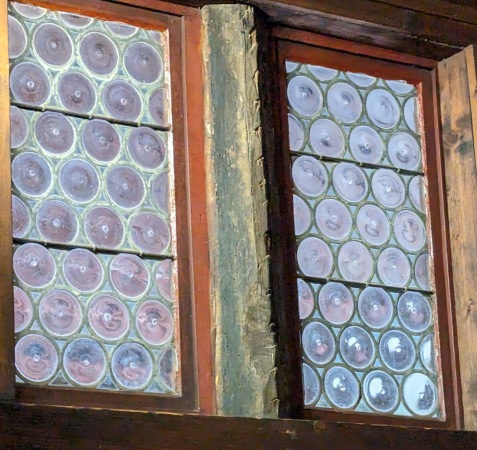
Some musical instruments. A Hurdy-gurdy, a 6 string violin and two harps.
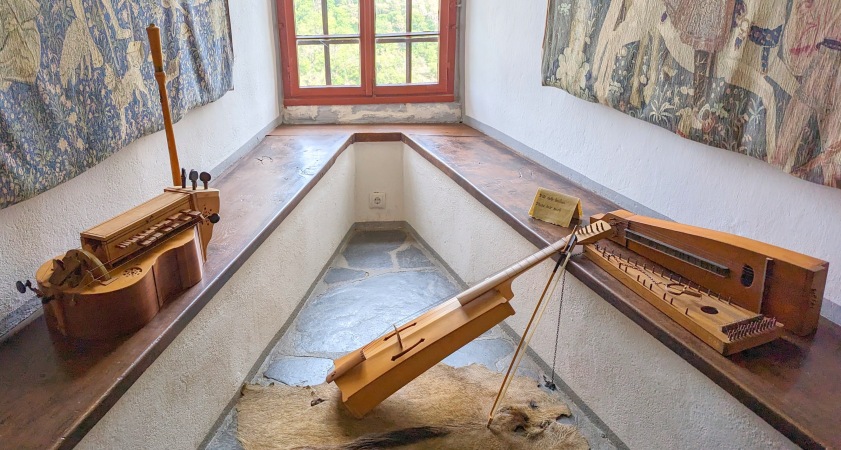
A "necessary room" located on the outside wall.
Go in, do your business, no flush required because this is what it looks like on the outside of the wall.
A straight drop to whatever or whoever happens to be there.
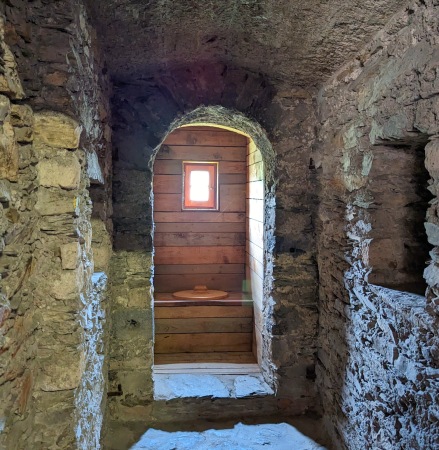
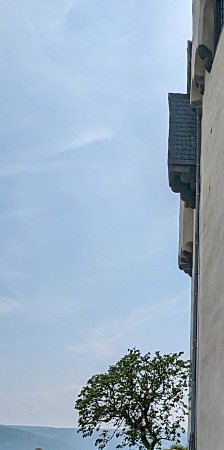
The ceiling of one of the rooms
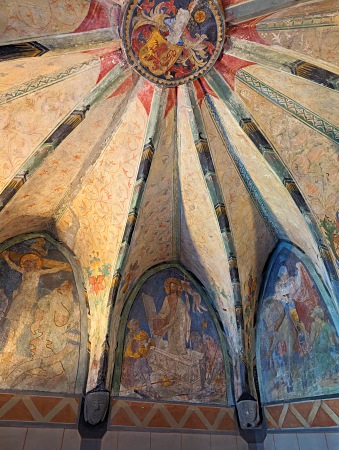
A tour of the armory with the types of weapons and armor used to attack and defend the castle.
Some actually predates it.
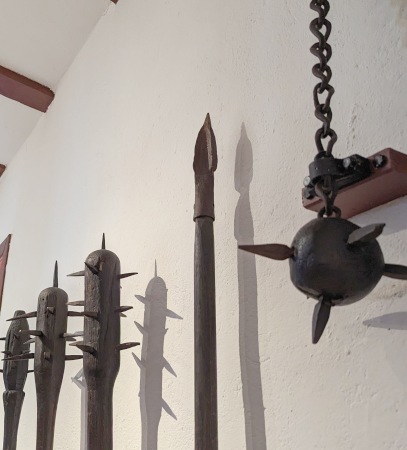
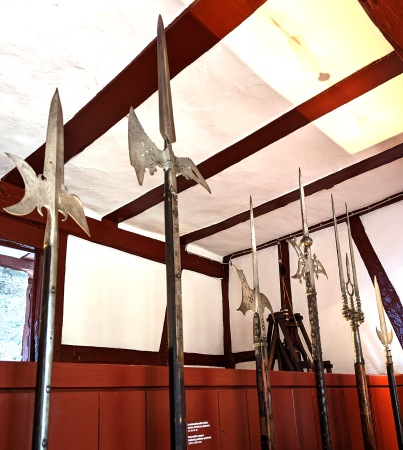
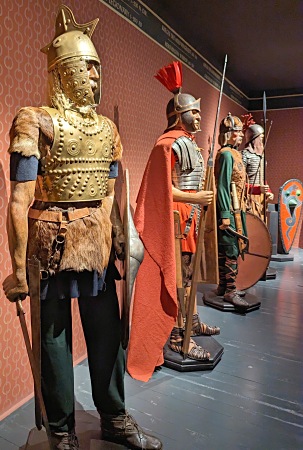
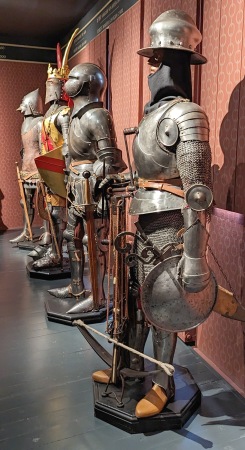
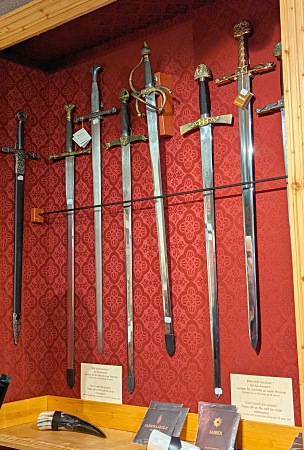
There was a blacksmith's workshop too with a forge and huge bellows, tools and some of what he was working on.

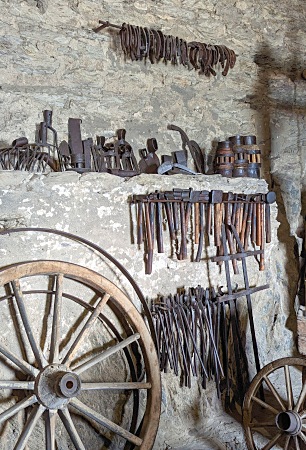
Tapestry wall hanging reproductions were available for purchase in the gift shop.

As we depart a look back at the castle's tower
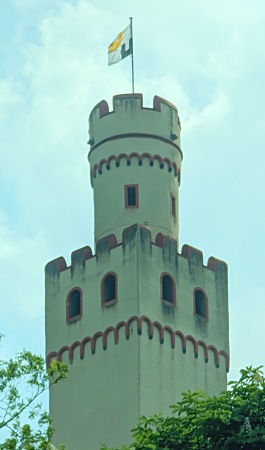
Back in town we passed the Electoral Palace of Koblenz
It is one of the last residential palaces built in Germany..
Today it offers exclusive rooms for festive banquets, conferences and family celebrations.

And over the city stands the Ehrenbreitstein Fortress now a Cultural Center and Koblenz State Museum.
